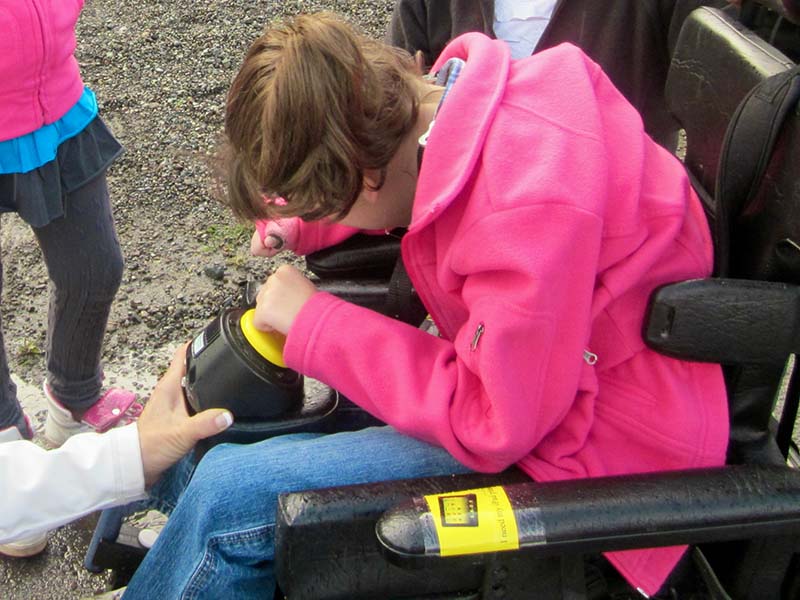Module 2: Defining Inclusion
INviting
In most schools, students are assigned to a teacher and a classroom at the beginning of school in September. Often, there will be a welcome sign over the door as a first step of inviting students to be a member of the class. Over a period of weeks or months, students in the class come together as a group. They learn classroom expectations and develop their own identity while exploring their role in the group. When this occurs, a safe environment is established where students are able to learn, pursue their interests, and take risks.
It is essential that students with multiple disabilities are also fully engaged in the process of creating their own personal and group identities. They too need to be seen as full authentic members of the class.
For students with multiple disabilities and complex needs, there can be challenges that get in the way of being invited to develop an identity and be viewed as a full member of the group. The following table identifies some of the opportunities for inviting the student with complex needs to belong:

| Opportunity | What you can do |
|---|---|
| Arrival times | Create a welcoming space in the classroom for the student with complex needs—greet student on arrival and engage in their interests. Where possible, try to have the student with disabilities share the same arrival time routines. This can be a challenge if arrival time is impacted by bussing schedules. If it is not possible to have the student with complex needs arrive at the same time as other students, then recreate the welcome routine with the student with one or two of their classmates as the welcoming group. |
| Sharing common areas | Ensure that your student has access and feels welcome in all of the common areas that their peers do; for example, in the cloakroom or playground. Are there meaningful school or class jobs that are part of arrival time routines that provide opportunities for a student with complex needs to feel a part of? |
| Provide extra time | Students with complex needs often require more time to accomplish tasks than their classmates do. Try to accommodate for the needed extra time during the arrival and welcoming times. |
| Learning objectives | Arrival times can include opportunities for working on learning objectives. For example, Jane is working on removing her jacket when she arrives at school each day. |

Case Example: Ami
Ami was a student in Grade 3. Due to her bussing schedule, Ami arrived late to school every day. By the time she arrived at the classroom, all of her classmates were sitting on the carpet for calendar time. The classroom teacher came up with a clever way to welcome Ami and have her join the group.
Each day, one classmate was selected to work with Ami to share the “joke of the day.” Once Ami arrived, the chosen classmate would join Ami and her EA in the hallway. Together they would choose a joke from a book. Then the EA taught the classmate to record the joke on Ami’s Step-by-Step communicator (a voice output device with a button switch Ami was learning to use). When they were ready, they entered the classroom and every child on the carpet turned around, excited to hear Ami tell the joke. It was such a great way for Ami to join her class. Her classmates were excited for Ami’s arrival and one by one each student learned about how Ami communicates—and how they could be her voice.


- What are some of the ways students are invited to be members of a class?
- What can you do to extend the invitation?